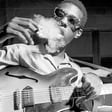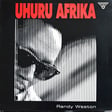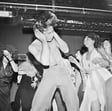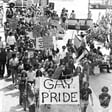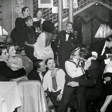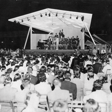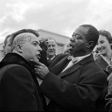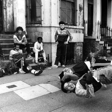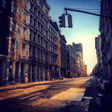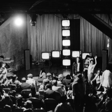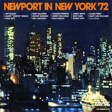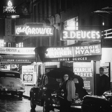
S02E04 Jazz, Africa & Islam - Part Two: 'Scenes In The City'
The demographic shift of The Great Migration during the period following the Civil War was a transformative historical moment for African Americans where they seized the opportunity to forge new cultural identities in the northern cities of the United States like Boston, New York, Philadelphia, and Detroit. Dancehalls and music venues like The Savoy Ballroom in Harlem became important culture centres for new generations of young Black Americans whose lives and urban politics were soundtracked by the revolutionary Bebop Jazz being played in venues like Minton's Playhouse and Monroe's Uptown by musical mavericks like Charlie Parker, Dizzy Gillespie and Max Roach.
During a period of monumental social and political change, Hard Bop and its more aggressive, bluesier tones would reflect the harshness of these modern urban environments. Black Jazz artists would introduce aesthetic innovations to re-establish Jazz music's link to Black working class culture, and to stay two steps ahead of the mass market consumerism and appropriation that swept through American culture in the 1950s.
Hard Bop was heavily influenced by the music of the Black Church, particularly the gospel stylings which emanated from the Baptist Churches of Chicago. As time progressed, with the traditional Black Church seen as representative of a moderate mainstream class within the Black population, conversion to Islam became an increasingly common component of the new urban identities which emerged in the period following World War II, with Black Muslims adopting what they saw as a modern ideology that offered models of self-determination and solidarity for working class African Americans in the mid-20th Century. Islamic themes of spirituality and universal brotherhood seeped into Jazz music and were most famously represented in the music of John Coltrane and his 1965 masterpiece 'A Love Supreme'.
Tracks:
Take My Hand, Precious Lord - Thomas Dorsey
Filthy McNasty - Horace Silver Quintet
Woody N' You - Coleman Hawkins
Song of Happiness - McCoy Tyner
Tenderly - Lynn Hope
Onda Callejara - Ry Cooder
Acknowledgement / Pursuance / Psalm - John Coltrane
Books:
What The Music Said: Black Popular Music & Black Popular Culture - Mark Anthony Neal
Soundtrack to A Movement: African American Islam, Jazz & Black Internationalism - Richard Brent Turner
A Love Supreme - Ashley Khan
Giant Steps / Cookin' - Kenny Mathieson
3 Shades of Blue: Miles Davis, John Coltrane, Bill Evans & The Lost Empire of Cool - James Kaplan
Jazz & Justice - Gerald Horne
EMCK
